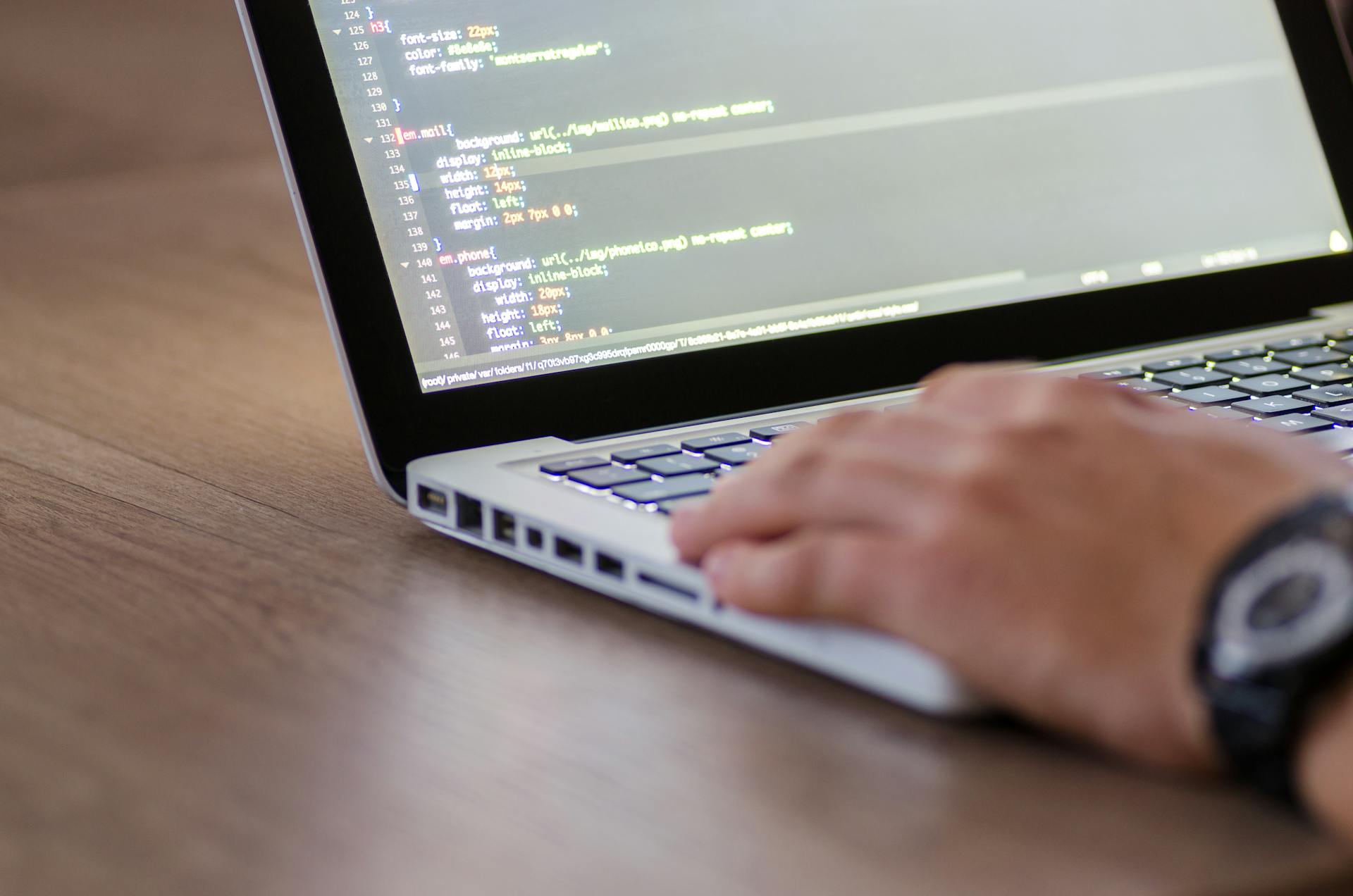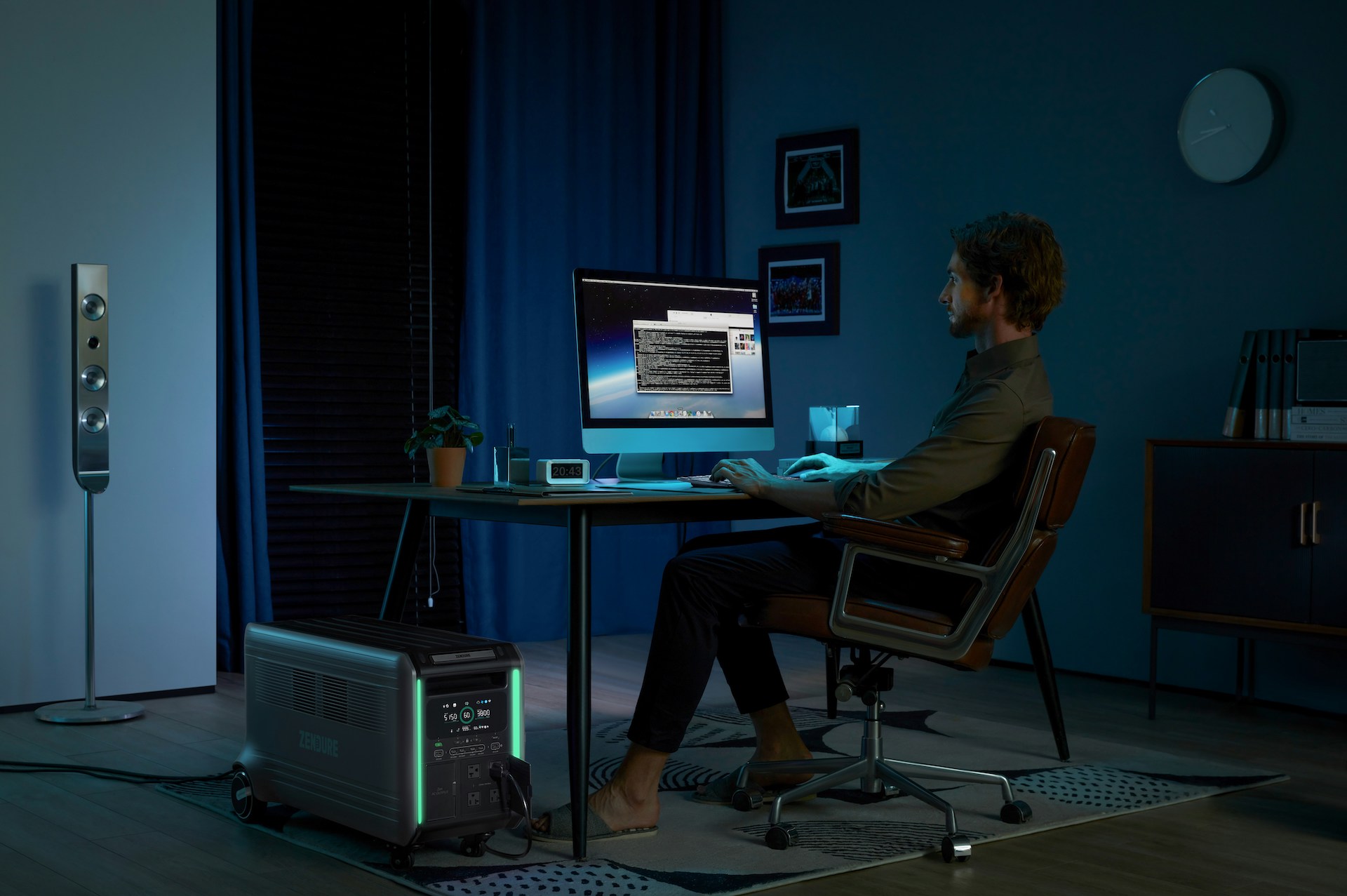The Future of Product Design: Embracing Innovation and Technology
In this article, we’ll explore the exciting future of product design, delving into how machine learning, innovative technology, and evolving design processes shape the industry. We’ll also examine how virtual reality transforms how designers work and create, opening up new possibilities for innovation and creativity.
This article is brought to you by Experience Haus – London’s leading provider of immersive, real-world courses in design, strategy, marketing and tech. Whether you’re looking to launch a new career in UX/UI design, upskill in product management, or explore the latest in AI, Experience Haus offers expert-led training to help you succeed. Explore our range of UX/UI courses to open up a world of exciting career possibilities.
The Role of Machine Learning in Product Design
Machine learning is rapidly becoming integral to product design, enabling designers to work more efficiently and effectively. By leveraging the power of algorithms and data analysis, designers can gain valuable insights into user preferences, market trends, and design patterns.
This technology allows designers to create products more closely aligned with users’ needs and desires, resulting in higher customer satisfaction and engagement. As machine learning continues to evolve, we can expect to see even more innovative applications in product design.
Innovative Technologies Reshaping the Design Process
In addition to machine learning, a wide range of innovative technologies are transforming the product design landscape. From 3D printing and generative design to augmented reality and the Internet of Things, these tools enable designers to push the boundaries of what’s possible.
Designers can create more functional, efficient, and aesthetically pleasing products by incorporating these technologies into their workflows. As these technologies continue to advance, we can expect to see even more groundbreaking innovations in product design.
Virtual Reality: A Game-Changer for Product Designers
Virtual reality (VR) is quickly becoming a game-changer in product design. By immersing designers in virtual environments, VR allows them to experience their creations in a whole new way, enabling them to identify potential issues and refine their designs before bringing them to life.
VR also facilitates collaboration among design teams, allowing designers to work together in real time, regardless of their physical location. As VR technology continues to evolve, we can expect to see even more exciting applications in product design.
The Impact of Machine Learning on Product Design
Machine learning is revolutionising the product design industry by enabling designers to identify patterns, understand user preferences, and create more personalised and efficient designs. By analysing vast amounts of data, machine learning algorithms can provide designers with valuable insights into consumer behaviour, market trends, and design best practices.
The technology is also beneficial in the early stages of the design process, where it can help designers generate ideas, test concepts, and refine their designs based on user feedback. As machine learning advances, we can expect to see even more innovative applications in product design.
Identifying User Preferences Through Machine Learning
One key benefit of machine learning in product design is its ability to identify user preferences and behaviours. By analysing data from various sources, such as social media, online reviews, and user surveys, machine learning algorithms can provide designers with valuable insights into what users want and need from their products.
This information can be used to create more targeted and practical designs that resonate with users more deeply. By incorporating user preferences into the design process, companies can develop products that are more likely to succeed in the marketplace.
Streamlining the Design Process with Machine Learning
Machine learning also helps streamline the product design process by automating many repetitive and time-consuming tasks that designers face. For example, machine learning algorithms can generate design variations, optimise layouts, and test different optimiser schemes and materials.
By automating these tasks, designers can focus on their work’s more creative and strategic aspects, such as creativity, problem-solving, and user experience design. This saves time and resources and allows designers to explore a broader range of possibilities and push the boundaries of what’s possible.
Real-World Examples of Machine Learning in Product Design
Many real-world examples exist of how machine learning is used in product design. One notable example is Autodesk’s Dreamcatcher, a generative design tool that uses machine learning algorithms to create optimised designs based on user-optimised parameters.
Another example is Adobe Sensei, an artificial intelligence platform that powers many of Adobe’s creative tools, including Photoshop and Illustrator. By using machine learning to automate tasks such as image editing and colour correction, Adobe Sensei helps designers work more efficiently and effectively.
Innovative Technologies Transforming Product Design
The world of product design is constantly evolving, with new technologies emerging every day that have the potential to transform the way we design and create products. From 3D printing and generative design to augmented reality and the Internet of Things, these innovative tools enable designers to push the boundaries of what’s possible and create more functional, efficient, and aesthetically pleasing products.
In this section, we’ll explore some of the most exciting technologies shaping the future of product design and discuss how designers and companies worldwide use them.
Smart Home Devices: A Frontier for Product Designers
One of the most significant trends in product design today is the rise of smart home devices. From voice-activated assistants like Amazon’s Alexa and Google’s Home to connected appliances and security systems, these devices transform how we interact with our homes and their products.
For product designers, smart home devices represent a new frontier for innovation and creativity. Designers can create more responsive, personalised, and intuitive products by incorporating sensors, connectivity, and artificial intelligence into their designs.
The Role of Industrial Design in Shaping the Future
Industrial design has played a critical role in shaping the products we use daily, from the cars we drive to the phones we carry in our pockets. However, with the rise of new technologies such as 3D printing, generative design, and advanced materials, the role of industrial design is evolving in exciting new ways.
Today, industrial designers are using these tools to create lighter, stronger, and more sustainable products than ever before. They are also experimenting with new forms and shapes previously impossible to achieve with traditional manufacturing methods.
Advanced Materials Enabling Innovative Product Design Solutions
Another area where technology is transforming product design is developing advanced materials. These materials open new possibilities for designers to create more durable, flexible, and energy-efficient products, from self-healing polymers and shape-memory alloys to graphene and carbon nanotubes.
For example, researchers at MIT have developed a new type of ceramic that is as tough as metal but as light as plastic, making it an ideal material for aerospace and automotive applications. Similarly, companies like Adidas and Nike use 3D printing to create customised shoes with unique materials and designs tailored to individual athletes’ needs.
The Evolution of the Design Process in the Digital Age
Digital technologies have profoundly impacted the design process, changing how designers work and collaborate. From sketching and prototyping to testing and refining, the tools and platforms available today have transformed every stage of the design process.
In this section, we’ll examine how the design process has evolved in the digital age, focusing on how technological advancements have streamlined workflows, enhanced creativity, and enabled designers to create more innovative and user-centric products.
Streamlining Design Workflows with Digital Tools
One of the most significant ways digital technologies have transformed the design process is by streamlining workflows and automating repetitive tasks. From cloud-based collaboration platforms like Figma and InVision to 3D modelling software like Autodesk Fusion 360 and Rhino, designers today have access to many tools that make their work faster, easier, and more efficient.
These tools enable designers to work remotely, share files and feedback in real time, and iterate quickly on designs without needing physical prototypes. They also allow for greater flexibility and experimentation, as designers can quickly test different variations and make changes on the fly.
Enhancing Creativity in the Digital Design Process
While some may argue that digital tools can stifle creativity, many designers enhance their creative process by providing new ways to explore and visualise ideas. For example, generative design software like Autodesk’s Dreamcatcher uses algorithms to generate design variations based on user-specified parameters, allowing designers to explore a broader range of possibilities than they could on their own.
Similarly, virtual and augmented reality technologies enable designers to create immersive experiences that blur the lines between the physical and digital worlds. By using these tools to prototype and test designs in realistic environments, designers can gain valuable insights into how users interact with their products and make more informed decisions about form, function, and usability.
Creating User-Centric Products in the Digital Age
Perhaps the shift towards user-centric design has been the most significant impact of digital technologies on the design process. With the rise of big data and analytics, designers now have access to vast information about user behaviour, preferences, and needs, which they can use to create products more closely aligned with users’ expectations.
Digital tools like user testing platforms and analytics software enable designers to gather feedback and insights at every stage of the design process, from the initial concept to the final product. By incorporating this feedback into their designs, designers can create more intuitive, engaging, and effective products that meet users’ needs.
Virtual Reality: The Next Frontier in Product Design
Virtual reality (VR) is quickly emerging as one of the most exciting and transformative technologies in product design. By allowing designers to create and manipulate three-dimensional objects in a virtual environment, VR opens up new possibilities for creativity, collaboration, and innovation.
This section will explore virtual reality’s potential in product design. We will discuss how it allows designers to create immersive experiences, test and refine designs in real time, and collaborate with team members worldwide.
Creating Immersive Design Experiences with Virtual Reality
One of virtual reality’s most significant advantages in product design is its ability to create immersive experiences that allow designers to explore and interact with their creations naturally and intuitively. By donning a VR headset and using specialised controllers, designers can manipulate objects, change colours and materials, and even walk around specialised as if they were natural physical objects.
This level of immersion can be beneficial in the early stages of the design process when designers are still exploring different concepts and ideas. By seeing and interacting with their designs realistically, designers can make more informed decisions about form, function, and usability and catch potential problems early on.
Testing and Refining Designs in Virtual Reality Environments
Another key benefit of virtual reality in product design is its ability to facilitate rapid prototyping and testing. Designers can test and refine their ideas by creating virtual prototypes without needing expensive physical models or prototypes.
This can be particularly useful for complex or challenging products like medical devices or aerospace components. By testing these products in a virtual environment, designers can identify potential issues and make necessary changes before investing in costly physical prototypes.
Collaborative Product Design in the Age of Virtual Reality
Virtual reality is also transforming the way that product design teams collaborate. By creating shared virtual spaces where team members can interact with each other and their designs in real time, VR enables designers to work together more efficiently and effectively than ever before.
This can be particularly useful for geographically dispersed teams, as it allows them to work together as if they were in the same physical space. It also enables designers to bring in experts from different fields, such as engineering or marketing, to provide feedback and insights at critical points in the design process.
The Role of Augmented Reality in Product Design
While virtual reality is receiving considerable attention in product design, augmented reality (AR) is also emerging as a powerful tool for designers. By overlaying digital information in the real world, AR allows designers to visualise and test their designs in real-world contexts, creating a more seamless and intuitive design process.
In this section, we’ll discuss how augmented reality is used in product design to visualise and test designs in real-world contexts and how this technology is helping designers create more user-friendly products.
Visualising Designs in Real-world Contexts with Augmented Reality
One key benefit of augmented reality in product visualisation is its ability to allow designers to visualise their creations in real-world contexts. Using AR technology to overlay digital designs onto physical visual environments, designers can see how their products will look and function in the real world without physical prototypes.
For example, a furniture designer could use AR to visualise a new chair design in a customer’s living room, or an automotive designer could use AR to see how a visual design would look on the road. This level of context can be precious in helping designers make informed decisions about form, function, and usability.
Creating Functional and User-Friendly Products with Augmented Reality
Augmented reality is also used in product design to create more functional and user-friendly products. By using AR to test and refine designs in real-world contexts, designers can identify potential issues and make necessary changes to improve the overall user experience.
For example, an AR-enabled mobile app could allow customers to visualise how a new piece of furniture would fit in their home before making a purchase, or an AR-enabled visual experience could guide users through assembling a complex product. By creating these immersive and interactive experiences, designers can create more intuitive and enjoyable products.
The Importance of Diverse Perspectives in Product Design
As the world becomes increasingly diverse and interconnected, it’s more important than ever for product design teams to embrace diverse perspectives and incorporate insights from different backgrounds, cultures, and disciplines. By bringing together a wide range of voices and experiences, design teams can create more inclusive, innovative products that effectively meet the needs of a diverse user base.
This section will explore the importance of diverse perspectives in product design, discussing how incorporating insights from different backgrounds, cultures, and disciplines can lead to more inclusive and innovative design solutions.
Incorporating Diverse Insights for Inclusive Design
One key benefit of incorporating diverse perspectives into the product design process is the ability to create more inclusive designs that meet the needs of a broader range of users. By bringing together designers from different backgrounds and cultures, teams can gain insights into the unique needs and preferences of other user groups and create products that are more accessible and user-friendly for everyone.
For example, a product design team working on a new mobile app might bring in designers from different age groups, geographic regions, and socioeconomic backgrounds to ensure the app is intuitive and easy for diverse users. By incorporating these diverse perspectives into the design process, the team can create a product that is more inclusive and effective at meeting the needs of a wider audience.
Fostering Innovation Through Diverse Perspectives
Incorporating diverse perspectives into the product design process can foster innovation and creativity by combining various ideas and experiences. When designers from different backgrounds and disciplines work together, they can challenge each other’s assumptions, spark new ideas, and create truly unique and groundbreaking products.
For example, a product design team working on a new wearable device might bring together fashion, technology, and healthcare designers to create a functional, easy-to-use, stylish, and aesthetically pleasing product. By leveraging the team’s diverse skills and perspectives, the designers can create a product that stands out in a crowded market and meets the needs of a wide range of users.
Ethical Considerations in Product Design
As product designers create new and innovative products using cutting-edge technologies, it’s essential to consider the ethical implications of their work. From data privacy and security concerns to issues of accessibility and inclusivity, designers are responsible for creating products that meet users’ needs and reflect the values and principles of society as a whole.
In this section, we’ll examine the ethical implications of product design in the age of innovative technology, discussing data privacy, accessibility, and designers’ responsibility to create products that benefit society.
Addressing Data Privacy Concerns in Product Design
One of the most significant ethical concerns in product design today is data privacy and security. As more and more products collect and store user data, designers are responsible for ensuring that this data is protected and used responsibly. This means designing products with robust security features, being transparent about data collection and usage, and giving users control over their data.
For example, a smart home device that collects data on user behaviour and preferences should be designed with strong encryption and secure data storage and should provide users with clear information about what data is being collected and how it will be used. By prioritising data privacy and security in the design process, designers can create products that users can truly feel comfortable using.
Designing for Accessibility and Inclusivity
Other important ethical considerations in product design are accessibility and inclusivity. As designers create products used by a wide range of people, it’s essential to ensure that they are accessible and usable by everyone, regardless of their abilities or background.
This means designing products with features like adjustable text size, high-contrast colour schemes, and compatibility with assistive technologies like screen readers. It also means considering the needs and experiences of diverse user groups, such as older adults, people with disabilities, and those from different cultural backgrounds. By prioritising accessibility and inclusivity in the design process, designers can create genuinely usable and inclusive products.
The Ethical Responsibility of Product Designers
Ultimately, product designers are responsible for creating products that benefit society, not just the companies or individuals who use them. This means considering the long-term impact of their designs on people, communities, and the environment and making ethical choices throughout the design process.
For example, a product designer working on a new electronic device should consider the environmental impact of the materials and manufacturing processes and strive to create a sustainable and recyclable product. They should also consider the product’s social impact, such as whether it will create jobs or displace workers and how it will affect different communities and populations. By taking a holistic and ethical approach to product design, designers can create products that meet users’ needs and contribute to a better world for everyone.
The Future of Product Design: Trends and Predictions
As we look to the future of product design, it’s clear that the field will continue to evolve rapidly. From the increasing focus on sustainability and personalisation to the potential impact of artificial intelligence and other emerging technologies, many exciting personalisation predictions exist to explore.
In this final section, we’ll delve into some of the most important trends and predictions for the future of product design, discussing topics such as the growing emphasis on sustainable design, the rise of personalisation, and the potential impact of artificial intelligence on the industry.
The Growing Emphasis on Sustainable Product Design
One of the biggest trends in product design today is the growing emphasis on sustainability and environmental responsibility. As consumers become more aware of the impact of their purchases on the planet, they are increasingly seeking out products that are eco-friendly, recyclable, and made from sustainable materials.
In response to this trend, product designers focus more on sustainable design practices, such as using renewable materials, minimising waste, and designing products for longevity and recyclability. By prioritising sustainability in the marketing process, designers can create better products for the environment and prioritise environmentally conscious consumers.
The Rise of Personalisation in Product Design
Another significant trend in product design is the rise of personalisation and customisation. As consumers seek out products tailored to their needs and preferences, personalisation and customisation create products that can be easily customised and adapted to suit different users.
This trend is partly driven by technological advances like customised and modular design, which allow for greater flexibility and customisation in the manufacturing process. It’s also being driven by the increasing availability of data on customisation preferences and behaviours, which designers can use to create products more closely aligned with the needs and desires of specific user groups.
The Potential Impact of Artificial Intelligence on Product Design
Perhaps the most exciting and transformative trend in product design today is the potential impact of artificial intelligence (AI) and machine learning. As these technologies continue to evolve and mature, they are opening up new possibilities for designers to create products that are smarter, more efficient, and more responsive to user needs.
For example, AI-powered design tools can analyse vast amounts of user data to identify patterns and insights that human designers might miss, allowing analysis of data-driven and user-centred design decisions. AI can also automate and streamline many aspects of the design process, from generating design variations to optimising product performance. As AI continues to advance, it has the potential to transform the way products are designed and developed, creating new opportunities for innovation and creativity in the field.
Advance Your Design Career with Experience Haus
Ready to advance your design skills? Experience Haus offers immersive courses and workshops in UX/UI design, product design, AI, and more. Led by industry experts, our real-world training helps both aspiring and experienced designers gain the skills and confidence needed to succeed.
Experience Haus courses feature:
- Live client projects to build your portfolio
- Small class sizes for personalised attention
- Flexible online and in-person formats in London
- Career support and an active alumni community
Explore our upcoming courses in:
Ready to jumpstart your design career? Browse our complete course offerings and sign up today. Join our newsletter to stay updated on the latest courses, events, and industry insights.
Start your design journey with Experience Haus and open up a world of exciting career possibilities. We look forward to being part of your creative future.




